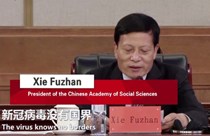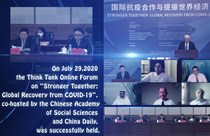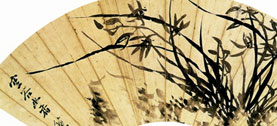China and Other Countries Crowd Into the Competition for Scholarly Research
Author : Source : The Chronicle of Higher Education 2013-12-04
Ian Wilhelm
In 1973, a handful of wealthy nations dominated the world's research production. About two-thirds of all the scholarly papers produced that year had authors from Britain, Canada, France, Germany, Italy, Japan, or the United States. Now, 40 years later, barely half of such papers do. What changed?
In a word: China.
In the past three decades or so, China's research output has exploded. From 2000 to 2011, its production of scholarly papers increased more than 600 percent. The country now produces the second-largest number of papers, behind only the United States. The overall number of papers produced by the United States still outpaces that of China—354,486 to 156,574 in 2011—but some experts predict that China will become the top producer within the next seven years or so.
To be sure, other nations, like South Korea and Brazil, have sped up their research production in recent years, contributing to the greater diversity in the international scholarly landscape. A report from the business-information provider Thomson Reuters, "Building Bricks: Exploring the Global Research and Innovation Impact of Brazil, Russia, India, China, and South Korea," looks at how those countries are becoming bigger players in global science.
As David Pendlebury, one of the authors of the report, put it: "The topline story has got to be China." On the basis of its research production as well as other criteria, "it has broken away in the last 10 years from these rapidly emerging countries," he said in an interview with The Chronicle.
Increased research, of course, does not mean better research. While it's difficult to measure the quality of scholarly papers, the Thomson Reuters report does use the frequency with which papers from China and the other nations are cited as a proxy for excellence. Chinese papers are indeed being increasingly referenced, Mr. Pendlebury said, and the percentage of highly cited works among them has grown steadily. Its production of top papers now equals that of Britain, the report says.
What's more, China has surpassed the United States in the number of patents filed, an important measure of how innovative an economy is. In 2011, the latest year for which data are available, 526,412 patents were filed in China, compared with 503,582 in the United States.
No doubt many of those Chinese patents were filed by global companies looking to protect their products in China. But even in terms of patents filed by residents, China outpaced the United States, 112,347 to 108,626.
The report says the Chinese government will continue to push for increased production from its researchers. It plans to increase the proportion of its gross domestic product spent on research and development from 1.75 percent in 2010 to 2.2 percent in 2015. (By comparison, the United States spent 2.79 percent of its GDP on research in 2010, the latest year for which data are available.) China wants to push for still more highly cited papers and patent ownership.
Some are skeptical of this strategy. Vivek Wadhwa, vice president for innovation and research at Singularity University, which aims to train emerging leaders for a technologically oriented future, said China's approach "has created a situation in which people are filing useless patents and flooding the system with garbage."
While there is some excellent research being produced, he said, by and large "its research papers and research projects are largely plagiarized and irrelevant."
The message for the United States, Mr. Wadhwa said, is to keep building the pipeline between university research and entrepreneurs, which gives the country a major advantage over its emerging competitors.
For Mr. Pendlebury, the lesson from the report is different. He said the growing investment in research by China and other nations is, rather than a threat, an opportunity for expanded collaboration.
"This is all the story about the globalization of research," he said, "not the end of the trans-Atlantic dominance."
Editor: Du Mei
Ye Shengtao made Chinese fairy tales from a wilderness
Ye Shengtao (1894–1988) created the first collection of fairy tales in the history of Chinese children’s literature...
-
How northern ethnicities integrated into Chinese nation
2023-09-18
-
Mogao caves
2023-09-12
-
Mogao Grottoes as ‘a place of pilgrimage’
2023-09-12
-
Time-honored architectural traditions in China
2023-08-29
-
Disentangling the civilizational evolution of China
2023-08-28
-
AI ethics in science fiction
2023-08-23














 2011-2013 by www.cssn.cn. All Rights Reserved
2011-2013 by www.cssn.cn. All Rights Reserved